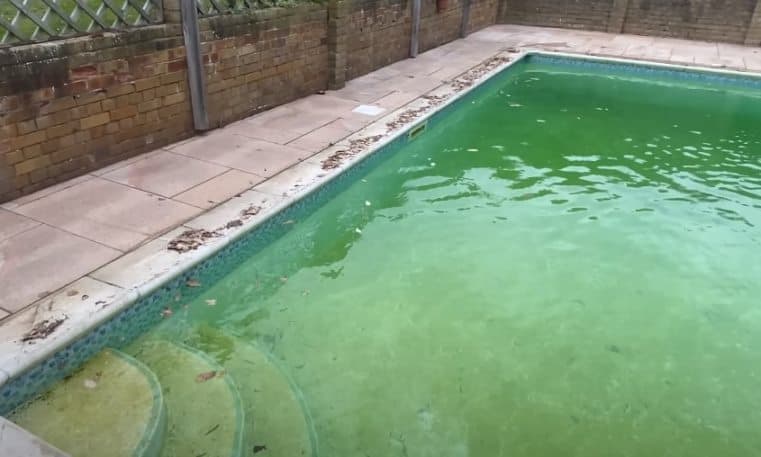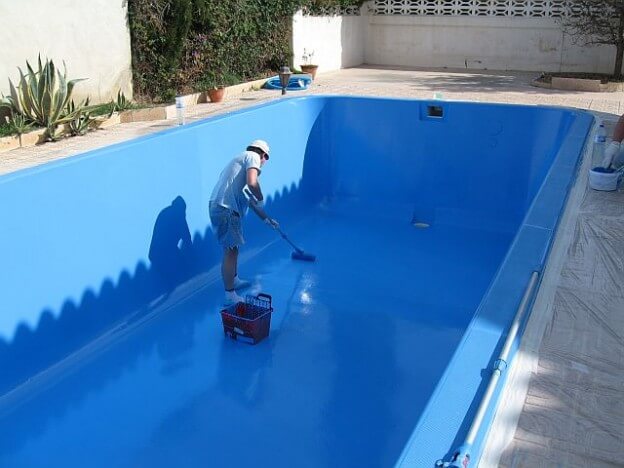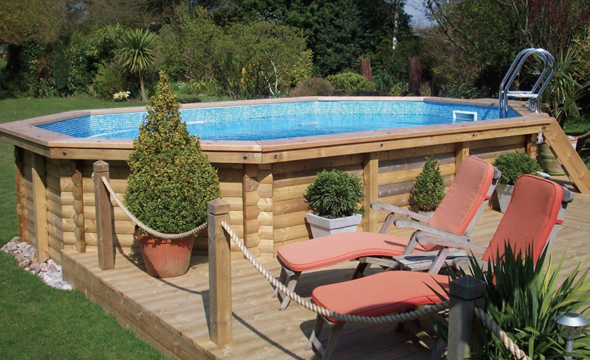If you own a pool, you know how important it is to keep it clean and well-maintained. However, dealing with algae buildup can be a real headache. Fortunately, there are ways to get rid of algae without using a vacuum.
In this article, we’ll discuss several methods for removing algae from your pool without a vacuum.
What is Algae?
Algae is a microscopic plant that can grow in your pool and turn the water green or cloudy. It can also make the surface of your pool slippery and create a foul odor. If left untreated, algae can become a breeding ground for bacteria and other harmful organisms, which can pose a risk to your health and the health of your family.

Methods for Removing Algae from Your Pool Without a Vacuum
There are several methods for removing algae from your pool without using a vacuum. These methods combined can help maintain a algae-free pool without the need for a vacuum.
1. Brushing the Pool Walls and Floor
One of the simplest ways to remove algae from your pool is by brushing the walls and floor. By using a pool brush, you can physically loosen and dislodge the algae that has attached itself to the surfaces.
Regularly brushing the walls and floor helps to break up the algae colonies, allowing the pool’s filtration system to capture and remove the algae particles. This manual agitation helps maintain a cleaner and healthier pool environment by preventing algae growth and improving water circulation.
2. Skimming the Surface of the Water
Skimming the surface of the water is another effective way to remove algae from your pool. Using a pool skimmer or a net, you can skim the top layer of the water to remove floating algae and other debris. This prevents the algae from sinking to the bottom and potentially attaching to the pool surfaces.
Regular skimming helps maintain a clean pool by reducing the nutrients available for algae growth and improving the overall water clarity. It is advisable to skim the surface daily or as needed to keep the pool free from floating algae.
3. Adding Chlorine to Your Pool
Adding chlorine to your pool is a crucial method for removing algae. Chlorine is a powerful disinfectant that effectively kills algae and prevents its growth. By maintaining the proper chlorine levels in your pool, you create an environment that is hostile to algae development.
Regularly testing the chlorine levels and adjusting them as needed helps ensure that algae are unable to thrive in the pool. Adding chlorine tablets, liquid chlorine, or using a chlorine generator are common ways to introduce chlorine into the pool water, helping to keep it algae-free and maintaining a healthy swimming environment.
4. Using Algaecide
Using algaecide is an effective method for removing and preventing algae in your pool. Algaecides are chemical treatments specifically designed to target and kill algae. They come in liquid or granular form and can be added directly to the pool water.
Algaecides work by disrupting the growth and reproduction of algae, ultimately causing them to die off. It is important to follow the manufacturer’s instructions regarding the dosage and application of the algaecide. Regular use of algaecide helps to prevent algae blooms and keeps your pool water clear and algae-free.
5. Using a Leaf Rake
Using a leaf rake is a practical method for removing debris, including algae, from your pool. This tool consists of a mesh net attached to a frame with a long handle. By skimming the surface and gently dragging the leaf rake across the pool, you can collect leaves, twigs, insects, and even small patches of algae.
To use a leaf rake effectively, start by positioning yourself at one end of the pool. Extend the rake out in front of you, making sure the net is submerged just below the water’s surface. Slowly move the rake along the water, allowing the net to capture any debris or algae in its path. Continue this motion until you reach the other end of the pool, periodically emptying the collected debris into a suitable container.
When using a leaf rake specifically for removing algae, it’s important to be gentle to prevent it from breaking apart and releasing spores into the water. Move the rake smoothly and avoid using excessive force that could disrupt the pool’s water balance.
6. Using a Nylon Brush Head
If you have a manual pool cleaner, you can attach a nylon brush head to it to scrub away algae from the walls and floor of your pool. This method is effective for removing small patches of algae and keeping your pool clean.
It’s advisable to work in sections, moving methodically across the pool and overlapping each stroke to ensure comprehensive coverage. Pay extra attention to areas prone to algae growth, such as corners, steps, and crevices.
7. Running the Filter Continuously
Running your pool filter continuously can help to remove algae from your pool. The filter will trap the algae and other debris, preventing it from circulating in the water. Be sure to clean your filter regularly to keep it working efficiently.
Preventing Algae Growth in Your Pool
Preventing algae growth in your pool is the best way to avoid having to deal with it in the first place. Here are some tips for preventing algae growth:
- Test your pool water regularly and adjust the chemical levels as needed.
- Clean your pool regularly, including brushing the walls and floor, skimming the surface of the water, and running the filter.
- Avoid overloading your pool with swimmers. Too many people in the pool can introduce bacteria and other contaminants that can encourage algae growth.
- Keep the water balanced by maintaining proper pH and alkalinity levels.
- Cover your pool when it’s not in use to prevent debris and contaminants from entering the water.
FAQs
What causes algae to grow in a pool?
Algae grows in pools when conditions are favorable, including warm temperatures, sunlight, and high nutrient levels in the water.
How long does it take to remove algae from a pool without a vacuum?
The time it takes to remove algae from a pool without a vacuum will depend on the severity of the algae buildup and the method you use to remove it. In general, it can take several days to a week to fully eliminate algae from a pool.
Can I swim in my pool after using algaecide?
It’s generally safe to swim in your pool after using algaecide, but be sure to follow the instructions on the packaging carefully.
Conclusion
Dealing with algae buildup in your pool can be frustrating, but it’s not an insurmountable problem. By using the methods outlined in this article and taking steps to prevent algae growth, you can keep your pool clean, clear, and healthy for you and your family to enjoy.


